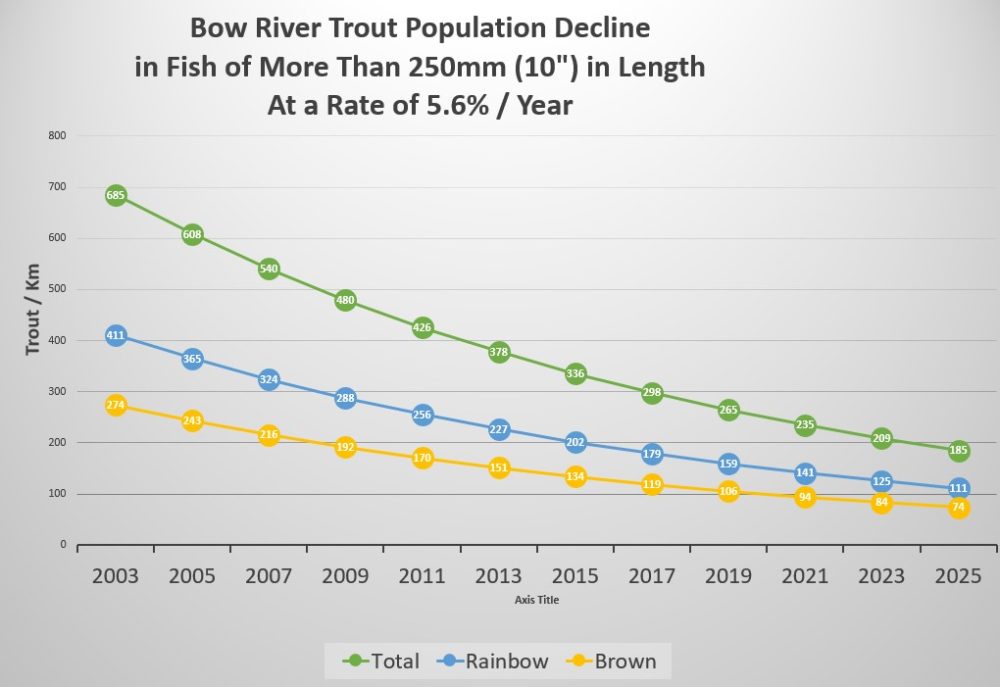The Bow River trout fishery has been under pressure in recent years. The ever increasing demand for outdoor recreational pursuits, environmental changes, and degradation of aquatic and riparian habitat has contributed significantly to trout population declines. The Bow River fish population has been monitored for more than 30 years, and up until 2003, the fishery was sustainable within fishery management regulatory constraints.

More recently we have seen dramatic changes to the Bow River with devastating floods, low river flows in the warmest seasons, higher summer temperatures, increased angling effort, and the possible impact of Whirling Disease. In addition, a recent report from the University of Calgary researcher, Chris Cahill indicated that the Bow River Rainbow Trout population may have declined by as much as 50% over ten years from 2003 to 2013.
What do these trout population declines mean for anglers?
The historical fish population data from 2000 to 2005 has been used as a baseline to projects what the trout populations may well be in 2021. Only mature trout with a fork length of >250 mm were included in the data set with an annual decline of 5.6% /year. Figure 1 shows the declining rainbow trout, brown trout and total trout population from 2003 to 2013, Th total mature trout population estimate dropped from 685 trout/Km of the river to 378 in 2013 and 235 in 2021, a decline of 45% and 66% respectively.

Figure 2 shows further analysis of a 2001 Bow River Rainbow Trout population survey covering the entire Bow River from Calgary to Carseland which was compared to the higher baseline data for the reach of the river below Policeman’s Flats. The substantially lower Rainbow Trout population decline reported in this survey is more indicative of the entire lower Bow River trout fishery below Calgary.
There is a need for caution with the interpretation of these data.Year-to-year variables in river flows, changing hydrology and fish habitat of the river, sampling techniques, and site selection will have impacted the consistency of data collection, its comparative analysis, and interpretation of results. The complete report of these data can be seen on the CRUA website
The projected decline in trout population beyond 2013 is speculative. Nevertheless, there is an indication that the Bow River fishery is in serious decline and headed in a dangerous direction. Fishery managers need to take immediate action to stop this decline.